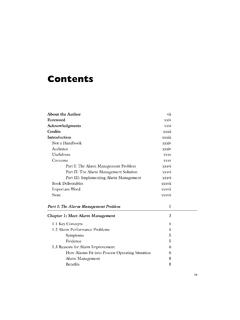Transcription of Good practice guide medication error risk minimisation and ...
1 30 Churchill Place Canary Wharf London E14 5EU United Kingdom An agency of the European Union Telephone +44 (0)20 3660 6000 Facsimile +44 (0)20 3660 5555 Send a question via our website European Medicines Agency, 2015. Reproduction is authorised provided the source is acknowledged. 18 November 2015 EMA/606103/2014 Pharmacovigilance Risk Assessment Committee (PRAC) Good practice guide on risk minimisation and prevention of medication errors Final Draft finalised by Project and Maintenance Group 2 of Member States and EMA pharmacovigilance governance structure 5 December 2014 Draft consulted with the European Commission s Patient Safety Quality of Care Working Group (PSQCWG) 11 February 2015 Draft agreed by Pharmacovigilance Risk Assessment Committee (PRAC) 12 February 2015 Draft agreed by the Implementation Group (IG) of Member States and EMA pharmacovigilance governance structure 18 February 2015 Draft circulated to the Committee for Human Medicinal Products (CHMP)
2 And the Co-ordination group for Mutual recognition and Decentralised procedures human (CMD-h) 19 February 2015 Draft adopted by the European Risk Management Strategy facilitation Group (ERMS-FG) 17 March 2015 Draft released for public consultation 14 April 2015 End of public consultation (deadline for comments) 14 June 2015 Revised draft agreed by Project and Maintenance Group 2 of Member States and EMA pharmacovigilance governance structure 15 August 2015 Draft consulted with CHMP Quality Working Party (QWP) and Biologics Working Party (BWP) 4 September 2015 Revised draft consulted with Committee for Human Medicinal Products (CHMP) and Co-ordination group for Mutual recognition and Decentralised procedures human (CMD-h) 4 September 2015 Good practice guide on risk minimisation and prevention of medication errors EMA/606103/2014 Page 2/41 Revised draft agreed by Pharmacovigilance Risk Assessment Committee (PRAC) 10 September 2015 Revised draft agreed by the Implementation Group (IG) of Member States and EMA pharmacovigilance governance structure 14 September 2015 Revised draft consulted with the European Commission s Patient Safety Quality of Care Working Group (PSQCWG) 5 October 2015 Revised draft endorsed by the European Risk Management Strategy facilitation Group (ERMS-FG) 12 October 2015 Revised draft discussed by Heads of Medicines Agencies (HMA) 23 October 2015 Revised draft adopted by Heads of Medicines Agencies (HMA)
3 18 November 2015 Final guidance published (date of coming into effect) 27 November 2015 Keywords Pharmacovigilance, medication errors, risk minimisation , error prevention; Good practice guide on risk minimisation and prevention of medication errors EMA/606103/2014 Page 3/41 Good practice guide on risk minimisation and prevention of medication errors Table of contents Executive summary .. 5 1. Introduction .. 5 2. 6 3. Legal basis .. 6 4. Definitions .. 6 5. Structure and processes .. 7 General principles of risk management planning and the tools used .. 7 Reporting and Coding of medication errors .. 9 Root cause analysis .. 9 Use-related risk analysis and Human Factor/Usability Engineering .. 9 Assessing the potential for medication errors during the product life-cycle.
4 10 General considerations for potential sources of medication error .. 10 Typical errors during the clinical trial programme .. 11 Defects and device failure (pre-authorisation) .. 12 medication errors resulting in harm during post-authorisation use .. 12 6. Risk minimisation .. 14 Risk minimisation 14 error prevention through naming, packaging and labelling (including name review activities and use of colour) .. 15 Risk minimisation tools and activities .. 18 Criteria to assess effectiveness of error prevention during post-marketing .. 20 Specific considerations in high risk groups .. 21 Paediatric patients .. 21 Elderly patients .. 22 Patients with visual impairment .. 22 General principles of good communication in relation to medicines information.
5 23 7. Operation of the EU regulatory network .. 24 Competent authorities in Member States .. 24 Pharmacovigilance Risk Assessment Committee .. 25 Patients and healthcare professionals .. 25 Marketing authorisation applicant or holder .. 26 European Medicines Agency .. 26 List of acronyms .. 27 Annexes .. 29 Annex 1 Potential sources of medication error in medicinal product design .. 29 Good practice guide on risk minimisation and prevention of medication errors EMA/606103/2014 Page 4/41 Annex 2 Design features which may reduce the risk of medication errors .. 35 Annex 3 - Examples of medication error characterised further through PASS .. 41 Good practice guide on risk minimisation and prevention of medication errors EMA/606103/2014 Page 5/41 Executive summary medication errors present a major public health burden and there is a need to optimise risk minimisation and prevention of medication errors through the existing regulatory framework.
6 The European Medicines Agency (EMA) in collaboration with the EU regulatory network was mandated to develop regulatory guidance for medication errors, taking into account the recommendations of a stakeholder workshop held in London in 2013. This guidance is intended to support the implementation of the new legal provisions regarding the reporting, evaluation and prevention of medication errors and is intended mainly for the pharmaceutical industry and national competent authorities. Healthcare professionals (HCP) are expected to consult national clinical guidance on reducing the risk of medication errors. This good practice guide is one of the key deliverables of the Agency s medication error initiative and offers guidance on risk minimisation and prevention of medication errors.
7 The guidance includes population-specific aspects in paediatric and elderly patients, as well as guidance on the systematic assessment and prevention of the risk of medication errors throughout the product life-cycle. The key recommendations: The potential for medication errors should be considered at all stages of the product life-cycle but particularly during product development. To minimise the risk of medication errors o careful consideration should be given to the name and pharmaceutical design of a medicinal product (including its type of dosage form, appearance and other formulation characteristics, packaging and labelling) in order to minimise the risk of mix-ups between different products; o the product information should inform HCPs, patients and caregivers of the most appropriate use of the product.
8 Where medication errors result in adverse outcomes, corrective actions should be taken. 1. Introduction A medication error is an unintended failure in the drug treatment process that leads to, or has the potential to lead to, harm to the patient. This includes the prescribing, storing, dispensing, preparation for administration or administration of a medicinal product. Examples of common medication errors include giving a medication to the wrong patient, the wrong dose of a medication being given to a patient or forgetting to give a patient a medication that had been prescribed for them. Competent authorities in EU Member States, marketing authorisation holders (MAHs) and the Agency have a number of obligations as detailed in Title IX of Directive 2001/83/EC, Regulation (EC) 726/2004, chapter 3, Article 28 and (for those medicinal products supplied with CE marked devices, Directive 93/42/EEC, Article 10 and Annex I).
9 These relate to the recording, reporting and assessment of suspected adverse reactions (serious and non-serious) associated with an error in the prescribing, storing, dispensing, preparation or administration of a medicinal product for human use authorised in the European Union (EU), including scientific evaluation and risk minimisation and prevention. medication errors represent a significant public health burden, with an estimated global annual cost exceeding 41. Individual studies have reported inpatient medication error rates of to and 1 Good practice guide on risk minimisation and prevention of medication errors EMA/606103/2014 Page 6/41 in another study, prescribing errors for inpatients occurred times per 1000 patient admissions2.
10 In most cases medication errors are preventable, provided that the potential risks of medication errors have been considered during the product development, appropriate measures put in place and reactive measures taken in response to documented reports of medication error . It is important that reports of medication errors and interventions are evaluated, and corrective and preventative actions considered, proportionate to the risk and in accordance with quality management systems, as described further in Good Vigilance Practices (GVP) Module I - Pharmacovigilance systems and their quality systems3. This good practice guide is complementary to the guideline on GVP and the scientific guidelines on quality, safety and efficacy of medicines published on the Agency s website, including the position paper on potential medication errors in the context of benefit-risk balance and risk minimisation measures (EMA/CHMP/277591/2013)4.













